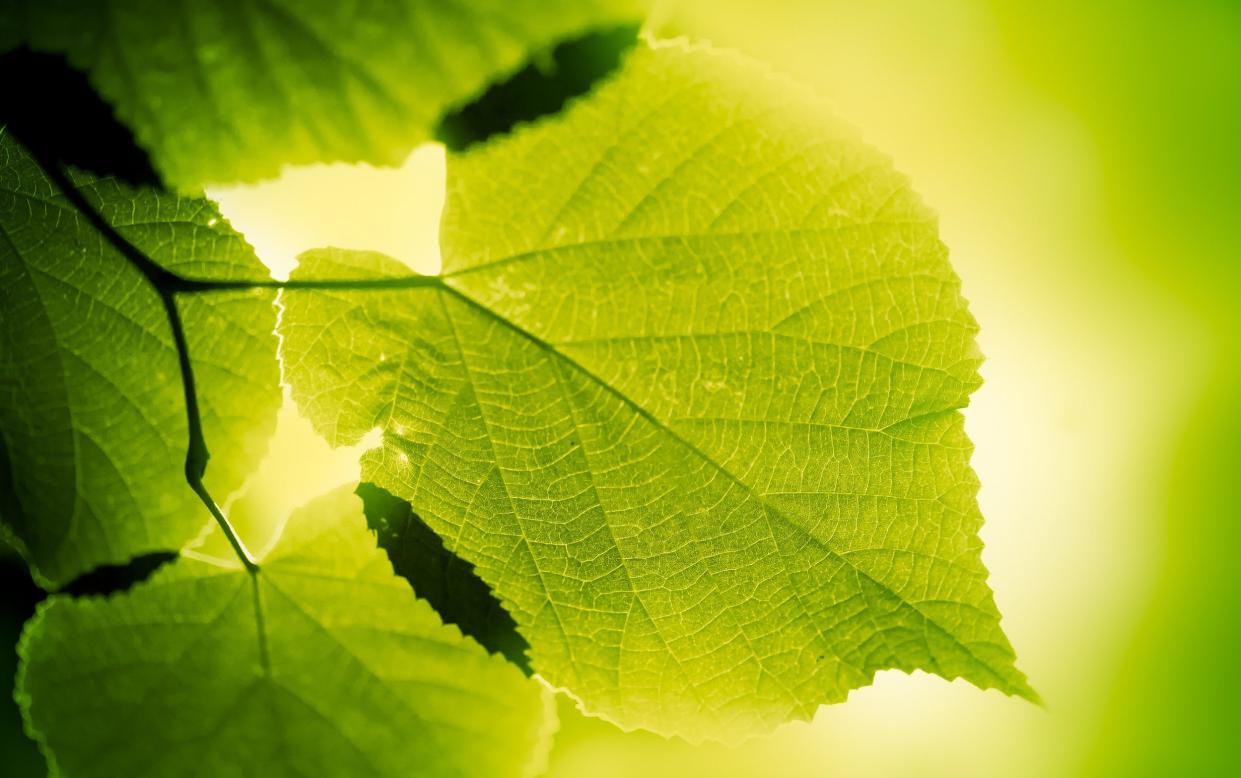Plants can adjust to rising temperatures and will absorb more CO2 in future

Plants will absorb 20 per cent more carbon dioxide than predicted by the end of the century, a new study has found, suggesting climate models are overestimating how fast the planet will warm.
Trinity College Dublin said their research painted an ‘uncharacteristically upbeat picture for the planet’ after finding models had failed to take into account all the elements of photosynthesis.
During photosynthesis green plants use light energy from the sun to convert carbon dioxide, water and minerals into the sugars they need for growth.
Scientists had thought that climate change could weaken the process, but the new research suggests plants can adjust to the temperatures, efficiently absorbing carbon dioxide, producing extra nutrients, and continue to thrive.
They found that on a global scale, the amount of carbon converted during photosynthesis could be up to 68 per cent greater by the end of the century compared to the start of the century, and 20 per cent more than some current models suggest.
Silvia Caldararu, Assistant Professor in Trinity’s School of Natural Sciences, said: “What our study shows is that ecosystems could take up more CO2 out of the atmosphere than previously thought, which would mean lower CO2 concentrations, so a less steep rise in temperature.
“So yes, that would give us a bit more time to reach net zero. But it is important to note that we predict a lot of this drawdown will happen towards the end of the century, while we need to cut emissions now, or possibly yesterday.”
Plants take up a huge amount of carbon dioxide every year, slowing down the effects of climate change, but experts have been uncertain whether that would continue as the climate changed.
Increased vegetation growth
In recent years, observations have shown that the carbon dioxide uptake by plants is increasing, which is likely driven in part by increased vegetation growth caused by carbon rises.
An increase in the ability of plants to absorb carbon dioxide not only removes it from the atmosphere, but more growth brings down land temperature and mitigating effects on climate change globally indirectly.
Although climate modellers have attempted to include estimates for this carbon sink, the researchers found that most models were not complex enough to understand the true resilience of plants to climate change.
Researchers found that under the extreme RCP 8.5 warming scenario, a pathway where greenhouse gas emissions continue to grow unmitigated, plants would take a fifth more carbon dioxide from the air than currently expected.
The RCP 8.5 scenario predicts a temperature increase of about 4.3C by 2100, relative to pre-industrial temperatures.
However the authors cautioned that land ecosystems only absorb about a quarter of human emissions, so the extra benefit would take that up to around 30 per cent.
They said it showed the importance of protecting forests and green areas and implementing planting schemes.
Dr Jürgen Knauer, of Western Sydney University, who headed the research team said: “These kinds of predictions have implications for nature-based solutions to climate change such as reforestation and afforestation and how much carbon such initiatives can take up.
“Our findings suggest these approaches could have a larger impact in mitigating climate change and over a longer time period than we thought.
“However, simply planting trees will not solve all our problems. We absolutely need to cut down emissions from all sectors. Trees alone cannot offer humanity a get out of jail free card.”
The research was published in the journal Science Advances.

